Alte Nationalgalerie
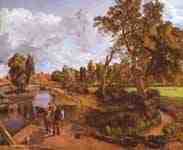
The house of the admiral in Hampstead, John Constable
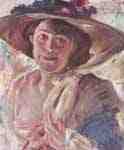
Woman with roses hat, Lovis Corinth
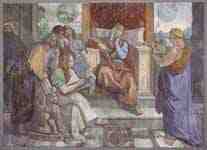
Joseph interpreting Pharaoh's dreams, Peter von Cornelius
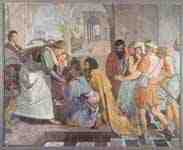
Joseph reveals himself to his brothers, Peter von Cornelius
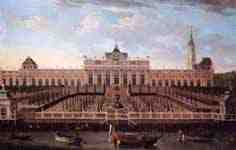
Berlin, Schloss Monbijou with the St. Sophia church tower in the background, Dismar Degen

Berlin, Kupfergraben lock with houses , Ludwig Deppe
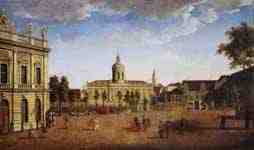
Berlin, View from Zeughaus to the Cathedral and Lustgarten, Carl Traugott Fechhelm
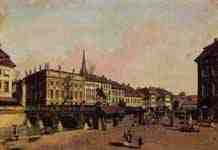
Berlin, Long Bridge, Carl Traugott Fechhelm
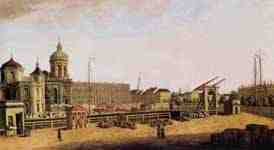
Berlin Lustgarten Zeughaus armory, Cathedral and Castle, Carl Traugott Fechhelm

The Watzmann, Caspar David Friedrich
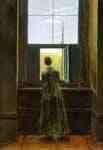
Woman at the window, Caspar David Friedrich
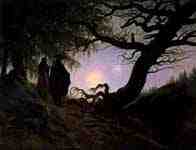
Man and woman contemplating the moon, Caspar David Friedrich
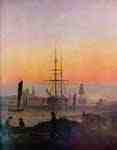
Ships in the port of Greifswald, Caspar David Friedrich
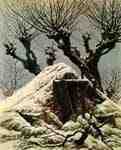
Snowy Hut ( hut in the snow ), Caspar David Friedrich
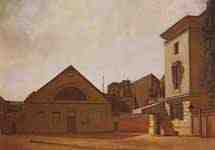
Berlin, Studio of the Gropius Brothers, Eduard Gaertner
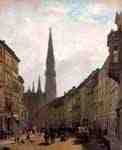
Berlin, Brüderstraße and St. Peter's Church, Eduard Gaertner
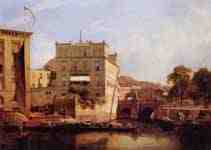
Berlin, Simsonbrücke (Herkulesbrücke) with adjoining Aktienspeicher, Eduard Gaertner
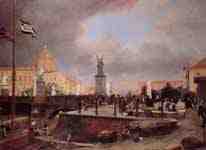
Berlin, Schlossbrücke, Eduard Gaertner
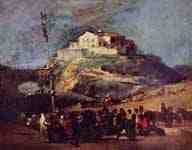
Maypole, Francisco de Goya y Lucientes
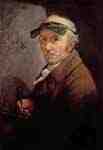
Self-portrait with the green eye-shade, Anton Graff
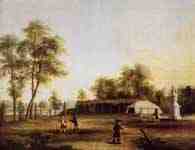
Berlin, The tents in the Tiergarten, Jacob Philipp Hackert
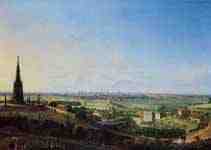
Berlin, View from Kreuzberg, Johann Heinrich Hintze
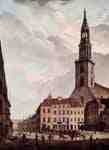
Berlin, Neuer Markt with St Mary's Church, Johann Heinrich Hintze
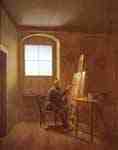
Caspar David Friedrich in his studio, Georg Friedrich Kersting
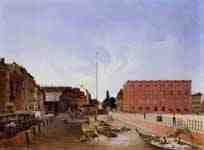
Berlin, School of Architecture from the castle bridge, Friedrich Wilhelm Klose
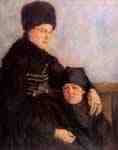
Woman from Dachau with child, Wilhelm Maria Hubertus Leibl
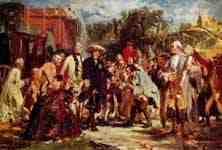
Frederick the Great on trips, Adolf Friedrich Erdmann von Menzel

Friedrichsgracht by moonlight, Adolf Friedrich Erdmann von Menzel
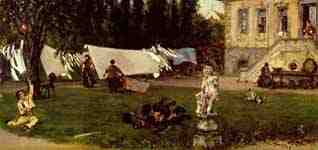
Dry place, Adolf Friedrich Erdmann von Menzel
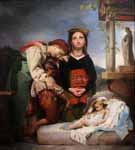
The Sick Child, François-Joseph Navez
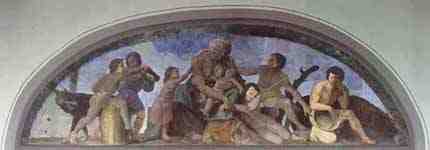
The seven lean years, Friedrich Overbeck
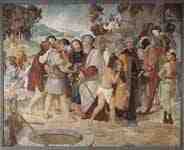
The sale of Joseph, Friedrich Overbeck
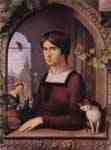
Portrait of the Painter Franz Pforr, Friedrich Overbeck

Rose, Moritz von Schwind
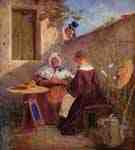
The Love Letter, Carl Spitzweg
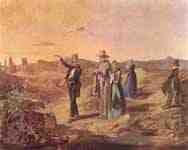
Englishmen in the Campagna, Carl Spitzweg
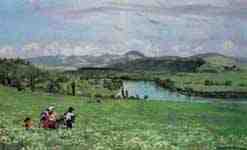
Bad Säckingen panorama with the place low-Obermumpf in the background, Hans Thoma
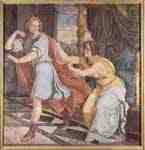
Joseph and the wife of Potiphar, Philipp Veit
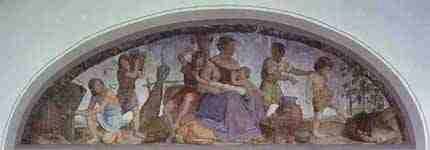
The Seven Fat Years, Philipp Veit

After school, Ferdinand Georg Waldmüller
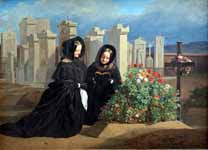
On All Souls' Day, Ferdinand Georg Waldmüller
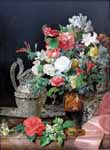
Bouquet with silver vessels and an antique vase, Ferdinand Georg Waldmüller
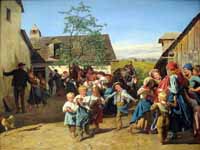
Return from the kermis, Ferdinand Georg Waldmüller
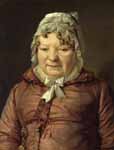
Henrietta Maria von Stierle-Holzmeister, Edle Forstheim, Ferdinand Georg Waldmüller
 Joseph's Interpretation of Dreams, Peter von Cornelius
Joseph's Interpretation of Dreams, Peter von Cornelius

Dr. Wilhelm Bode, Max Liebermann
The Alte Nationalgalerie (Old National Gallery) in Berlin is a gallery showing a collection of Neoclassical, Romantic, Biedermeier, Impressionist and early Modernist artwork, part of the Berlin National Gallery, which in turn is part of the Staatliche Museen zu Berlin. It is the original building of the National Gallery, whose holdings are now housed in several additional buildings. It is situated on Museum Island, a UNESCO-designated World Heritage Site.
History
Founding
The first impetus to founding a national gallery came in 1815. The idea gained momentum during the 1830s, but without an actual building. In 1841 the first real plans were created. These plans never made it out of the planning stages, but finally in 1861 the National Gallery was founded, after banker Johann Heinrich Wagener donated 262 paintings by both German and foreign artists. This donation formed the basis of the current collection. The collection was first known as Wagenersche und Nationalgalerie (Wagener and National Gallery) and was housed in the buildings of the Akademie der Künste. The current building, shaped like a Roman temple with an appended apse, was designed by Friedrich August Stüler and after his death, realised in detail under Carl Busse.
Building and related developments
Picture of the Alte Nationalgalerie from Heinrich August Pierer's Universal-Lexikon, 1891.
Friedrich August Stüler began working on a design for the building in 1863, based on a sketch by King Frederick William IV of Prussia.[2] Two years and two failed plans later, his third proposal was finally accepted. Stüler died before planning was completed and Carl Busse handled the remaining details in 1865. In 1866, by order of the king and his cabinet, the Kommission für den Bau der Nationalgalerie (Commission for the construction of the national gallery) was created. Ground was broken in 1867 under the supervision of Heinrich Strack. In 1872 the structure was completed and interior work began. The opening took place on March 22, 1876 in the presence of the Kaiser.
Because of the building's modern construction using brick and iron, it was widely believed to be fireproof. The exterior and outer staircase were constructed of Triassic sandstone from Nebra. At the opening the collection was still relatively small. Next to Wagener's collection, originally, was a display of cartoons by Peter von Cornelius that had been bequeathed to the Prussian government. The initial objective of the gallery was to collect contemporary, primarily Prussian art, as Berlin did not then have any repository of modern art.
In 1874 Max Jordan became the first director of the National Gallery. In 1896 he was succeeded by Hugo von Tschudi, who acquired Impressionist works, risking conflict with the Kaiser because this ended the collection's focus on German art.
20th century
In 1909, Ludwig Justi assumed the post of director, and added Expressionist works to the collection. Following the German Revolution of 1918–1919 that ended Imperial rule, he moved the modern art to the Kronprinzenpalais at the end of Unter den Linden, which became known as National Gallery II.
In 1933, the new Nazi authorities dismissed Justi, who was followed by Eberhard Hanfstaengl. He remained until 1937, when he too was dismissed. His successor, Paul Ortwin Rave, remained until 1950, although because of World War II the building was closed during much of that time. It was heavily damaged in Allied air raids. It was partly reopened in 1949, but reconstruction continued until 1969. Between 1998 and 2001, the museum was renovated thoroughly by German architect HG Merz. Some extra halls were added on the uppermost floor and now contain the Romantic works. The three-year, $62 million renovation of the Alte Nationalgalerie was part of a refurbishment of Museum Island and the energetic effort by government and private institutions to re-establish Berlin as Germany's political and cultural heart.[3]
Collection
Eisenwalzwerk (The Iron Rolling Mill (Modern Cyclopes)) by Adolph von Menzel.
The collection contains works of the Neoclassical and Romantic movements (by artists such as Caspar David Friedrich, Karl Friedrich Schinkel, and Karl Blechen), of the Biedermeier, French Impressionism (such as Édouard Manet and Claude Monet) and early Modernism (including Adolph von Menzel, Max Liebermann and Lovis Corinth). Among the most important exhibits are Friedrich's Der Mönch am Meer (The Monk by the Sea), von Menzel's Eisenwalzwerk (The Iron Rolling Mill) and sculptor Johann Gottfried Schadow's Prinzessinnengruppe, a double statue of princesses Louise of Mecklenburg-Strelitz and Frederica of Prussia. The Alte Nationalgalerie houses one of the largest collections of 19th-century sculptures and paintings in Germany.[1]
Architecture
The Alte Nationalgalerie, together with the Altes Museum, the Neues Museum, the Bode Museum, the Pergamon Museum, the Berlin Cathedral and the Lustgarten, make up the Museum Island complex in Berlin. It is situated in the middle of the island, between the rails of the Berlin Stadtbahn and Bode Street on the eastern banks.
It is connected to the Pergamon Museum to the north, and to the Neues Museum, the Altes Museum and the Berlin Cathedral to the south. The building was designed by Friedrich August Stüler with details by Carl Busse, in an architectural style that is a mix between late Classicism and early Neo-Renaissance, and realised by Heinrich Strack. It was intended to express "the unity of art, nation, and history", and therefore has aspects reminiscent of a church (an apse) and a theatre (the grand staircase) as well as a temple. An equestrian statue of Frederick William IV tops the stairs, and the inside stairs have a frieze by Otto Geyer depicting German history from prehistoric times to the 19th century.[2] The exterior of the building still retains its original appearance, whereas the interior has been renovated many times in order to suit the exhibits.[4]
See also
List of art museums
List of museums in Berlin
List of museums in Germany
Neue Nationalgalerie
References
Alte Nationalgalerie: About, ARTINFO, 2008, retrieved 2008-07-24
Claude Keisch, The Alte Nationalgalerie, Berlin, London: Scala / Munich: Beck, 2005, ISBN 9783406526756, p. 7.
Desmond Butler (December 2, 2001), Berlin Museum's Revival Bolsters German Identity New York Times.
Keisch, p. 8.
This article is based on a translation of the German Wikipedia article Alte Nationalgalerie.
Further reading
Bernhard Maaz (Ed.). Die Alte Nationalgalerie. Geschichte, Bau und Umbau. Berlin: G + H, 2001, ISBN 9783886094530.
Peter-Klaus Schuster. Die Alte Nationalgalerie. Berlin: SMB-DuMont, 2003, ISBN 9783832173708.
Angelika Wesenberg (Ed.). Frankreich in der Nationalgalerie: Courbet, Manet, Cézanne, Renoir, Rodin. Exhibition catalog. Berlin: Nationalgalerie, Staatliche Museen zu Berlin, 2007, ISBN 978-3-88609-585-8.
Bénédicte Savoy & Philippa Sissis (Hrsg.): Die Berliner Museumsinsel: Impressionen internationaler Besucher (1830-1990). Eine Anthologie. Böhlau, Wien/Köln/Weimar 2012, ISBN 978-3-412-20991-9.
----
Fine Art Prints | Greeting Cards | Phone Cases | Lifestyle | Face Masks | Men's , Women' Apparel | Home Decor | jigsaw puzzles | Notebooks | Tapestries | ...
----
Artist
A - B - C - D - E - F - G - H - I - J - K - L - M -
N - O - P - Q - R - S - T - U - V - W - X - Y - Z
Retrieved from "http://en.wikipedia.org/"
All text is available under the terms of the GNU Free Documentation License


